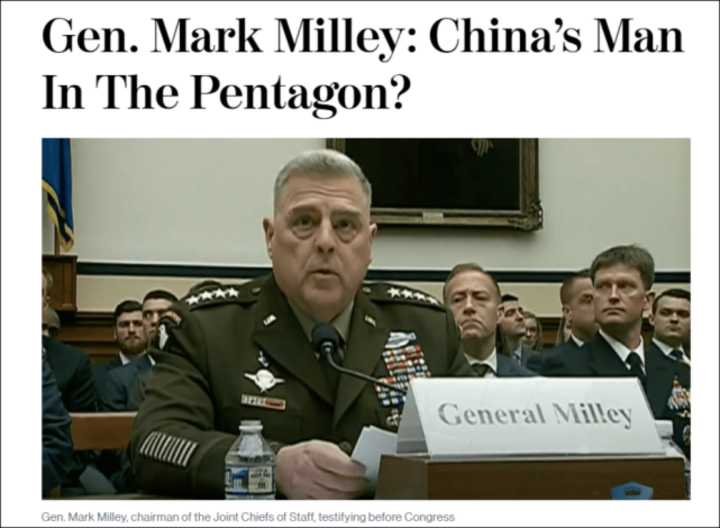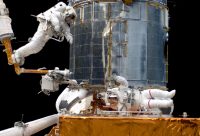First of all, this is a usable technology. For example, China’s nuclear fusion is progressing quite well, but this thing is 108,000 miles away from its application, and it is difficult to shake the throne of the US imperialist hegemony, so it cannot be counted. Second, if you want to lead, such as aero engines, it is very good to be able to tie it. It is a little unrealistic to want to beat the US emperor, so it can’t be counted.
There is just such an example in history.
In the early days of the U.S.-Soviet hegemony, the Soviet Union’s aerospace power was actually stronger than that of the U.S., but at that time, the melon-eating people in the U.S. always thought they were the celestial kingdom. On October 4, 1957, the Soviet Union launched the first man-made satellite “Sputnik 1”, which frightened the Americans. Later, the first astronaut was also from the Soviet Union, and later, the first astronaut. The lunar probe is still from the Soviet Union! As a result, Americans have awakened one after another, and various ambitious space projects have stepped up, and finally become the real world hegemony.
The Soviet satellite, which woke the Americans up from Gentle Township and motivated the Americans to make progress, became a symbol, known in history as the “Sputnik moment.” It probably means that Americans realize they are not number one in the world and redouble their efforts to catch up. But here we only take the meaning of the first half of the sentence, as to whether we can catch up with it depends on good luck.
After the old stories are finished, let’s talk about two major events that have happened in China’s aerospace industry in recent months: first, the successful test run of the world’s largest thrust solid rocket engine in active service. Foreign media said that China’s high-speed aircraft circled the earth and then landed. My Ministry of Foreign Affairs euphemistically said, yes.
The first thing can be echoed with SpaceX’s rockets. Although solid rockets and liquid rockets are not the same thing at all, it seems that we can see a completely different technical route from SpaceX’s tying of small engines into large engines. However, if you think about it carefully, it is really inappropriate to compare solid rockets with liquid rockets. Liquid fuel cannot be stored in the rocket. It is filled before the launch, which makes the launch process very rough, so the more urgent things are usually Let the solid rocket do it, and you can leave immediately with a little fire. Therefore, China tossing such a large solid rocket is estimated to be anxious to send something important.
The second thing is more interesting, Admiral Milley, chairman of the Joint Chiefs of Staff, said that the high-speed aircraft thing is “very concerning.” “I don’t know if this is a Sputnik moment, but I think it is very near.”
Milley is a more pragmatic buddy in the U.S. imperialist military. When the former commander Te Kuo was in power, Milley was worried about chaos, so he called the Chinese military in advance: My friend, no matter what the commander did, you can stay for the time being. Forbearance, our brothers can’t do it, so it’s settled. (Milley contacted the Chinese military privately twice. In the first call, Milley assured the Chinese military that the United States would not attack China. If the United States did take offensive actions, he would inform the Chinese side in advance.)

It can be seen that Milley is different from those bragging rights who only corrupt money to the US Congress. His words are more or less serious. Since this guy mentioned the Sputnik moment, it must be worth our consideration. .
War and Peace
In the past, war was a contest of national strength between two countries, so the strong or the self-confident one tended to wage war.
The emergence of nuclear weapons and intercontinental missiles has changed the situation. Even if the national strength is a little weak, no one will dare to touch you as long as you cross the pass line. For example, if you hold 100 intercontinental missiles, it will be very useful for world peace. From this point of view, war is no longer a pure contest of national power, which allows countries with weaker national power to have ample room for detours to develop their economy and strengthen their national power calmly.
The emergence of anti-missile, so that the situation has some new changes.
The topic of anti-missile has been talked about a lot before, and it can be summed up in one sentence: the ballistic missile starts from the middle section, the flight trajectory can be predicted, and there is a possibility of interception in theory. Launching a ballistic missile is like throwing a rock 100 meters away. Once the rock is out of your hand (equivalent to the separation of the warhead and the rocket), the flight trajectory is difficult to change in a large range. As long as the opponent is aiming accurately, you can throw a rock You hit the stone. At the time of the collision, both were in unpowered coasting, with only a handful of pitch-adjusted engines working.
Technically speaking, ABM is a huge improvement, but strategically speaking, ABM has broken the original balance of nuclear deterrence. Here is a concept called “saturation interception”. Suppose my interception rate is 20%, and you have 100 nuclear bombs, then I will engage in 500 anti-missile missiles. In this way, war has become a competition for national power.
If one day, when I am sure of intercepting all your nukes, war will not be far away. Fortunately, this day is still far away. According to the current interception rate of intercontinental missiles, if someone really engages in saturated interception, most of them will go bankrupt, and the other party will not need to launch nuclear bombs. What’s more troublesome is that to intercept missiles, the radar must be deployed in the direction of the missile’s attack, and strategic nuclear submarines can launch intercontinental missiles from anywhere in the ocean, and the low interception rate has to be discounted.
Because the interception rate of ICBMs is very low, ICBMs can also protect human peace. Only the “five hooligans” in the world have real ICBMs, and from the current situation, these five lords will not allow the sixth buddy to appear. It can be seen that intercontinental missiles are still the most reliable means of nuclear deterrence, even if there is such a flaw.
Now that the anti-missile variable has appeared, for the sake of world peace and human civilization, it is still necessary for us to find a new way of nuclear deterrence.
The nature of nuclear deterrence
The essence of nuclear deterrence is an “undefensible” offensive method. Note that “undefendable” here refers to theoretically indefensible. Only theoretically indefensible can a stable deterrence balance be formed among the major rogues.
Originally, ICBMs were well suited for this job. Now, although ICBMs are still unable to be effectively defended against, they are theoretically defensible. The fundamental reason why the missile can be intercepted is that the warhead spends most of the time gliding in space without power, and the flight trajectory can theoretically be predicted.
Then why don’t the missiles carry some fuel, so they can temporarily turn around? If there is less fuel belt, the distance of changing orbit is limited, and you will change if you change it. For example, the American Standard 3 interceptor has a certain terminal correction ability; if there is more fuel belt, the line will be extremely large, and the acceleration and steering will not be neat, and the side effect is a big one. heap.
The easiest way to prevent the flight trajectory from being predicted is to fly in the atmosphere all the way, and turn when you want, but then you won’t be able to get up the speed. This is called a cruise missile, which is essentially a drone. It is okay to abuse vegetables, but it is a bit of a joke to implement nuclear deterrence against “big hooligans”.
If you want to fly fast, go to space to speed up, and if you want to turn at any time, just fly in the atmosphere honestly. You can’t have both. However, the two conditions of “flying fast” and “unpredictable flight path” must be met at the same time, in order to truly achieve the state of being unable to defend. For the reason, you can read the previous article.
So, who is likely to become the guardian of world peace after the ICBM? Let’s not talk about it, this nonsense topic has been talked about several times. The answer is a high-speed aircraft in the air, which is the kind of thing that can fly at the edge of the atmosphere. Let’s call it a high-speed aircraft.




GIPHY App Key not set. Please check settings